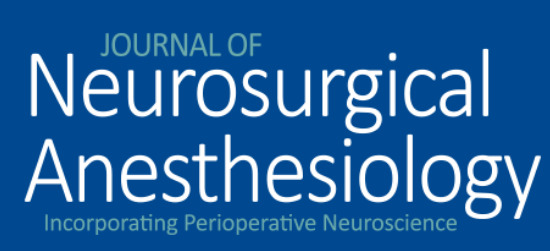
Journal of Neurosurgical anesthesiology
2023 Jul 1;35(3):333-337. doi: 10.1097/ANA.0000000000000843. Epub 2022 May 3.
Abstract
Background: Headache is the most common presenting symptom of spontaneous subarachnoid hemorrhage and managing this acute pain can be challenging. The aim of this study was to describe the course of headaches and factors associated with analgesic failure in patients with spontaneous subarachnoid hemorrhage.
Methods: We conducted a prospective observational study in patients admitted to a neurocritical care unit (between April 2016 and March 2017) within 48 hours of spontaneous subarachnoid hemorrhage. Headache intensity was assessed using a Numerical Pain Rating Scale (NPRS) ranging from 0 to 10. Analgesic failure was defined as any day average NPRS score >3 after 72 hours of hospitalization despite analgesic treatment.
Results: Sixty-three patients were included in the analysis. Thirty-six (56.25%) patients experienced at least 1 episode of severe headache (NPRS ≥7), and 40 (63.5%) patients still reported moderate to severe headache on the final day of the study (day 12). Forty-six (73.0%) patients required treatment with opioids and 37 (58.7%) experienced analgesic failure. Multivariable analysis showed that analgesic failure was associated with smoking history (odds ratio [OR]=4.31, 95% confidence interval [CI]: 1.23-17.07; P =0.027), subarachnoid blood load (OR=1.11, 95% CI: 1.01-1.24; P =0.032) and secondary complications, including rebleeding, hydrocephalus, delayed cerebral ischemia, hyponatremia, or death (OR=4.06, 95% CI: 1.17-15.77; P =0.032).
Conclusions: Headaches following spontaneous subarachnoid hemorrhage are severe and persist during hospitalization despite standard pain-reducing strategies. We identified risk factors for analgesic failure in this population.
Copyright © 2022 Wolters Kluwer Health, Inc. All rights reserved.
- PMID: 35499145
- DOI: 10.1097/ANA.0000000000000843
